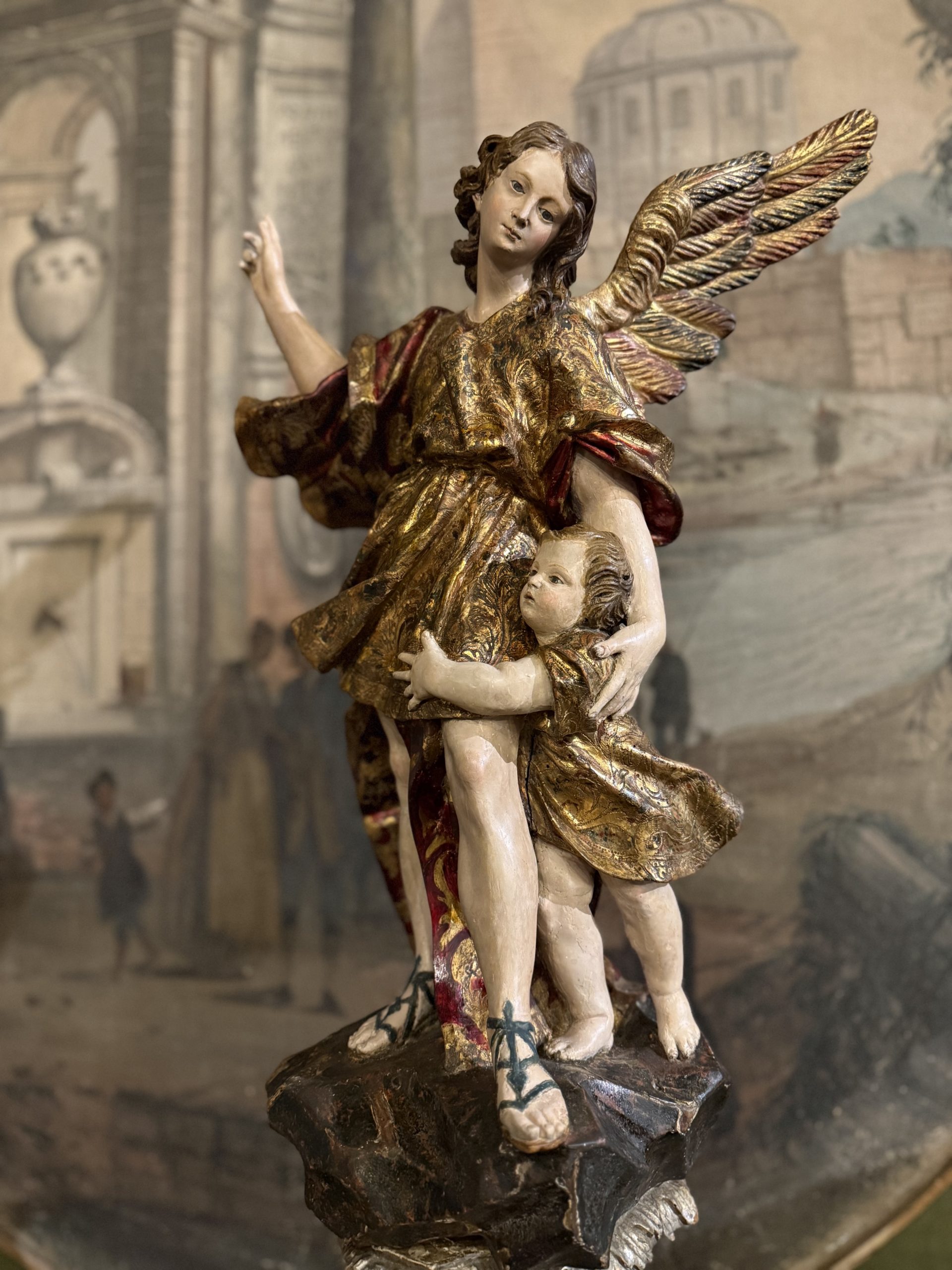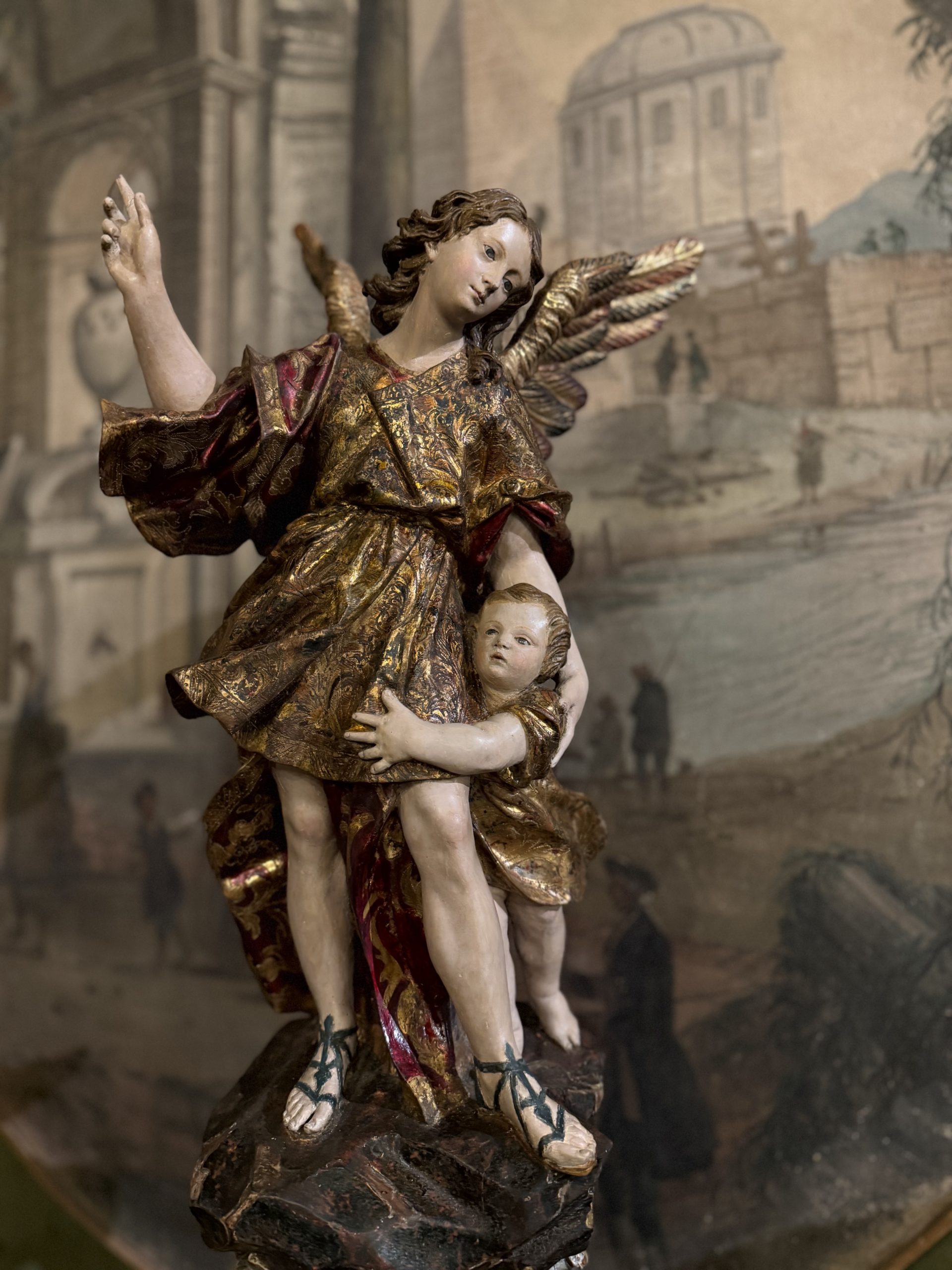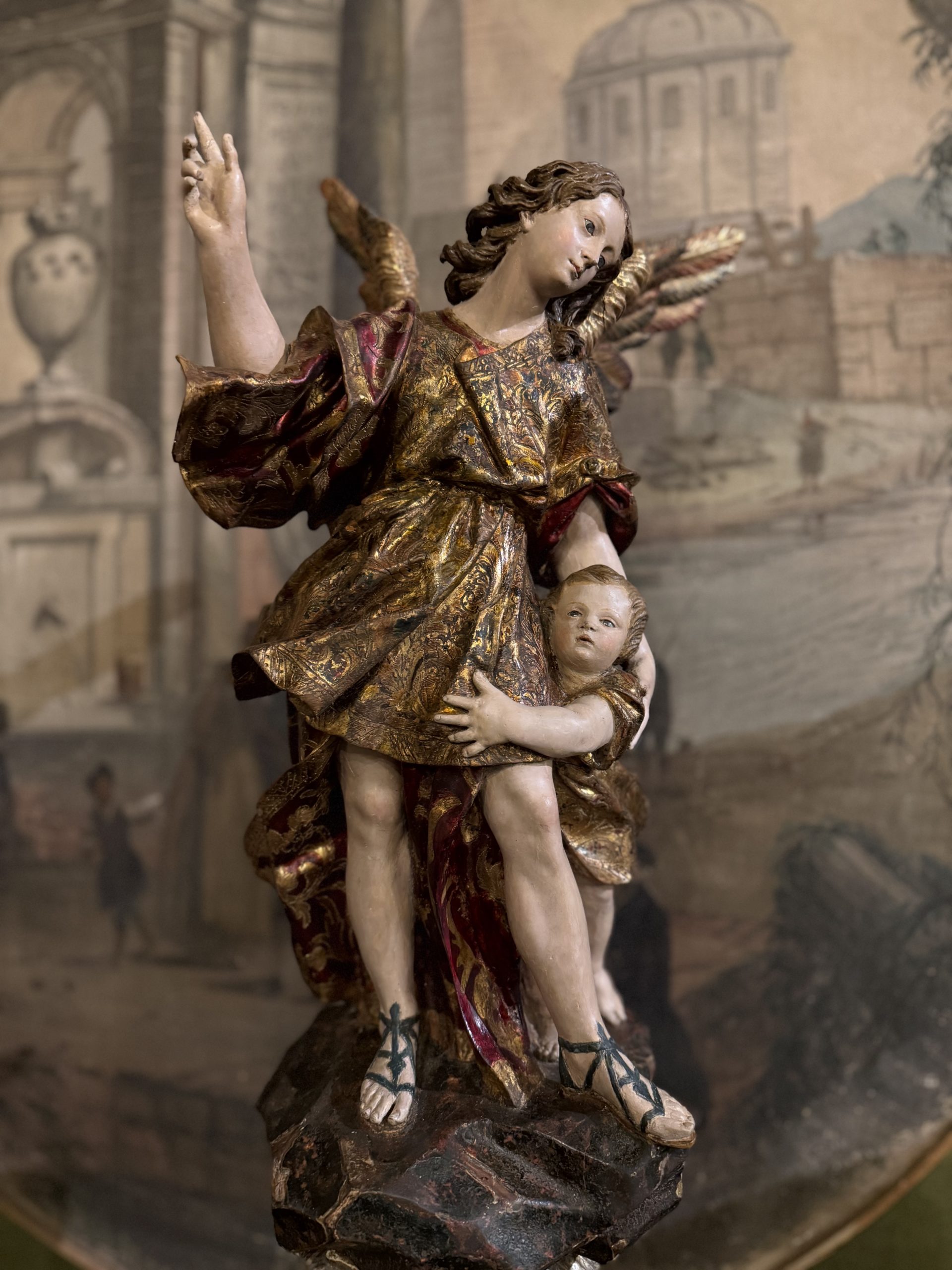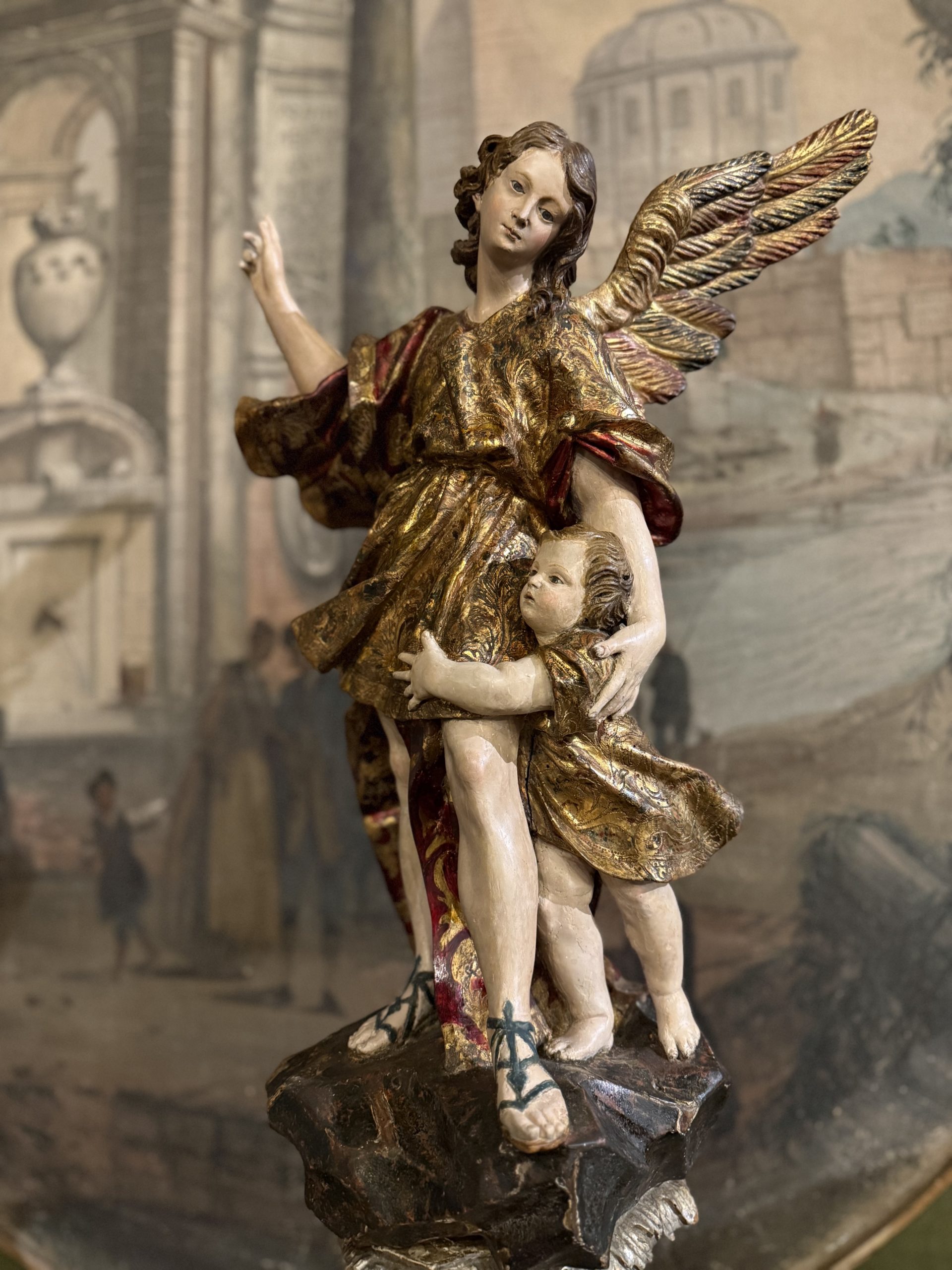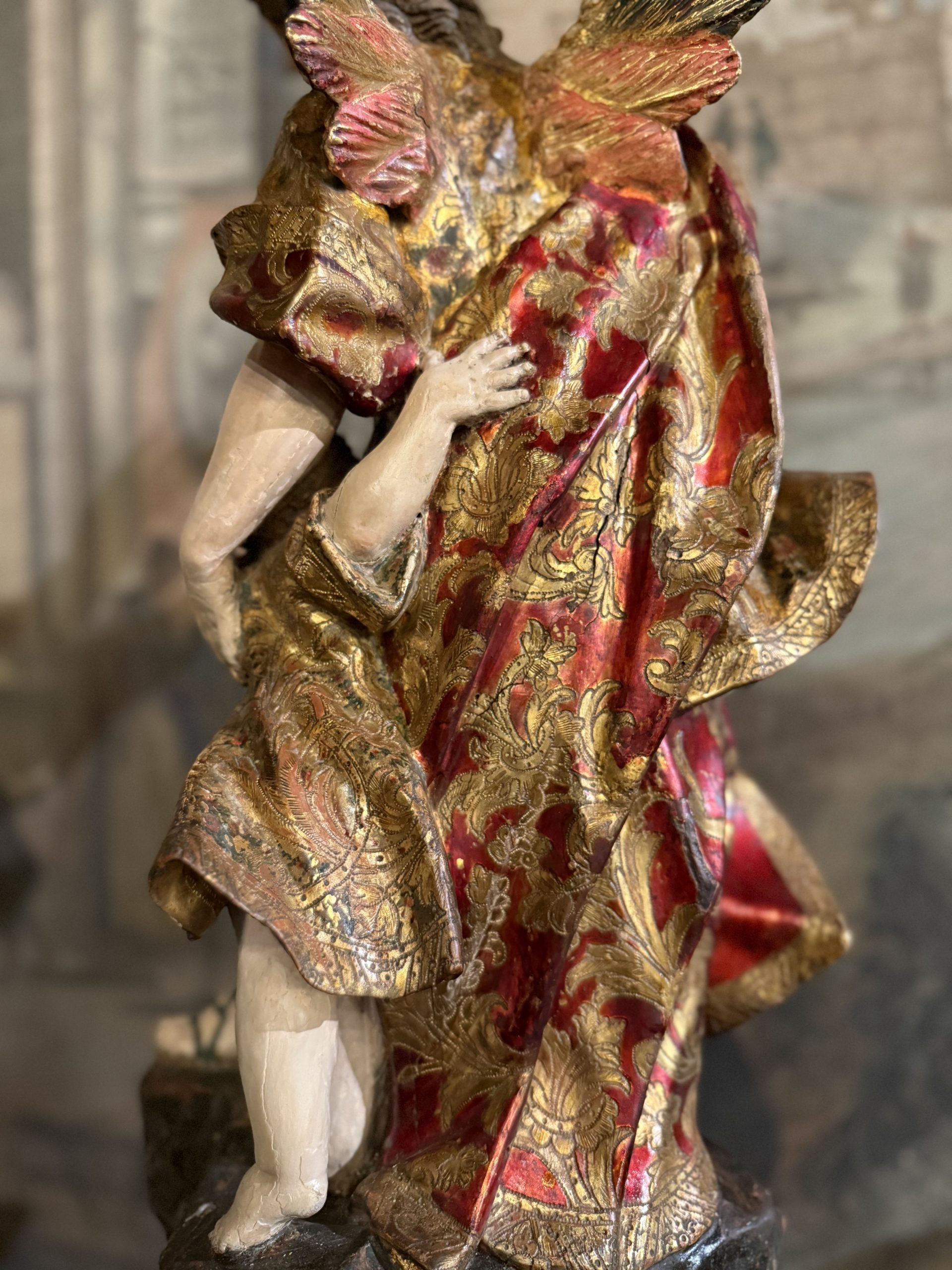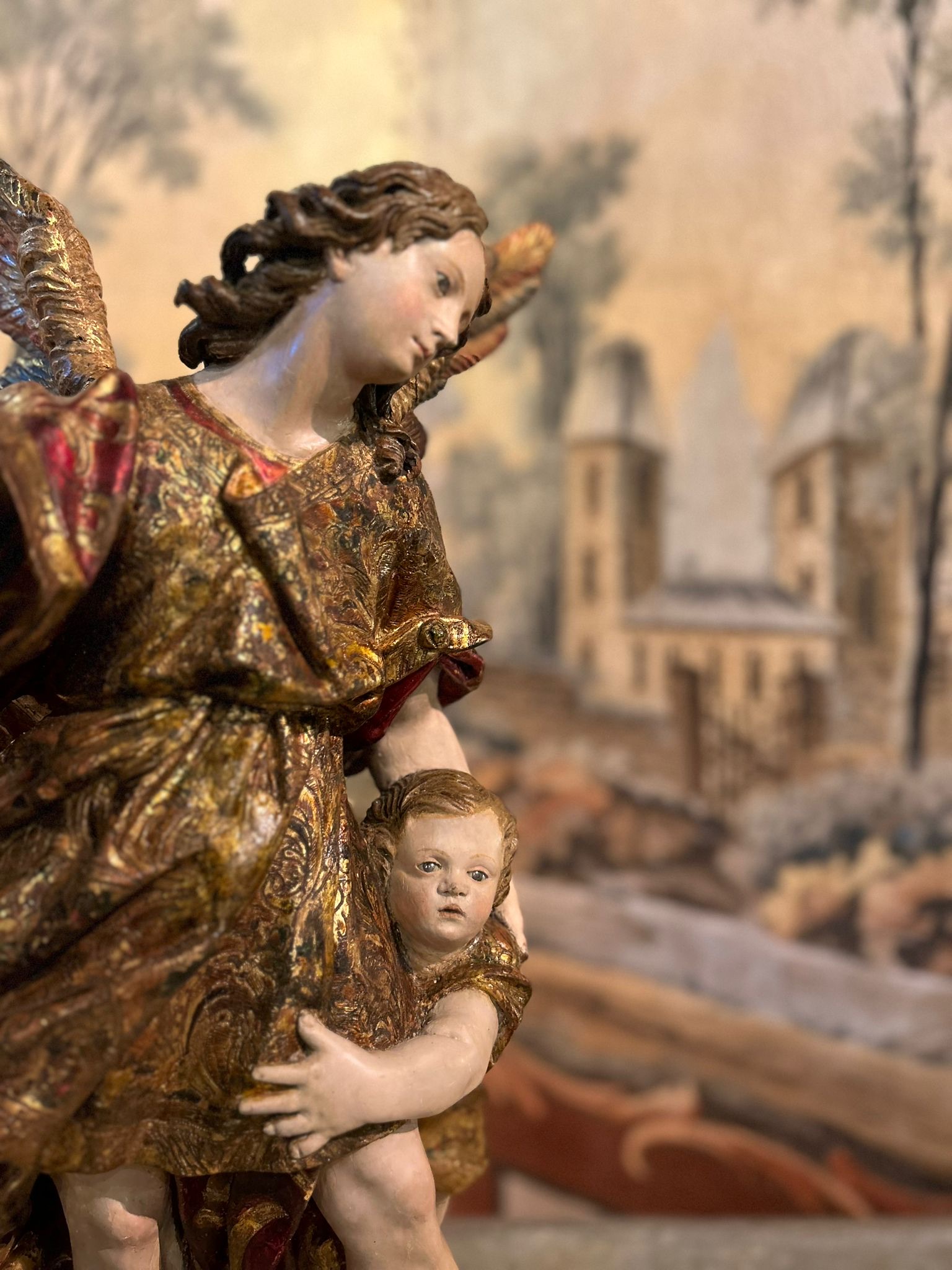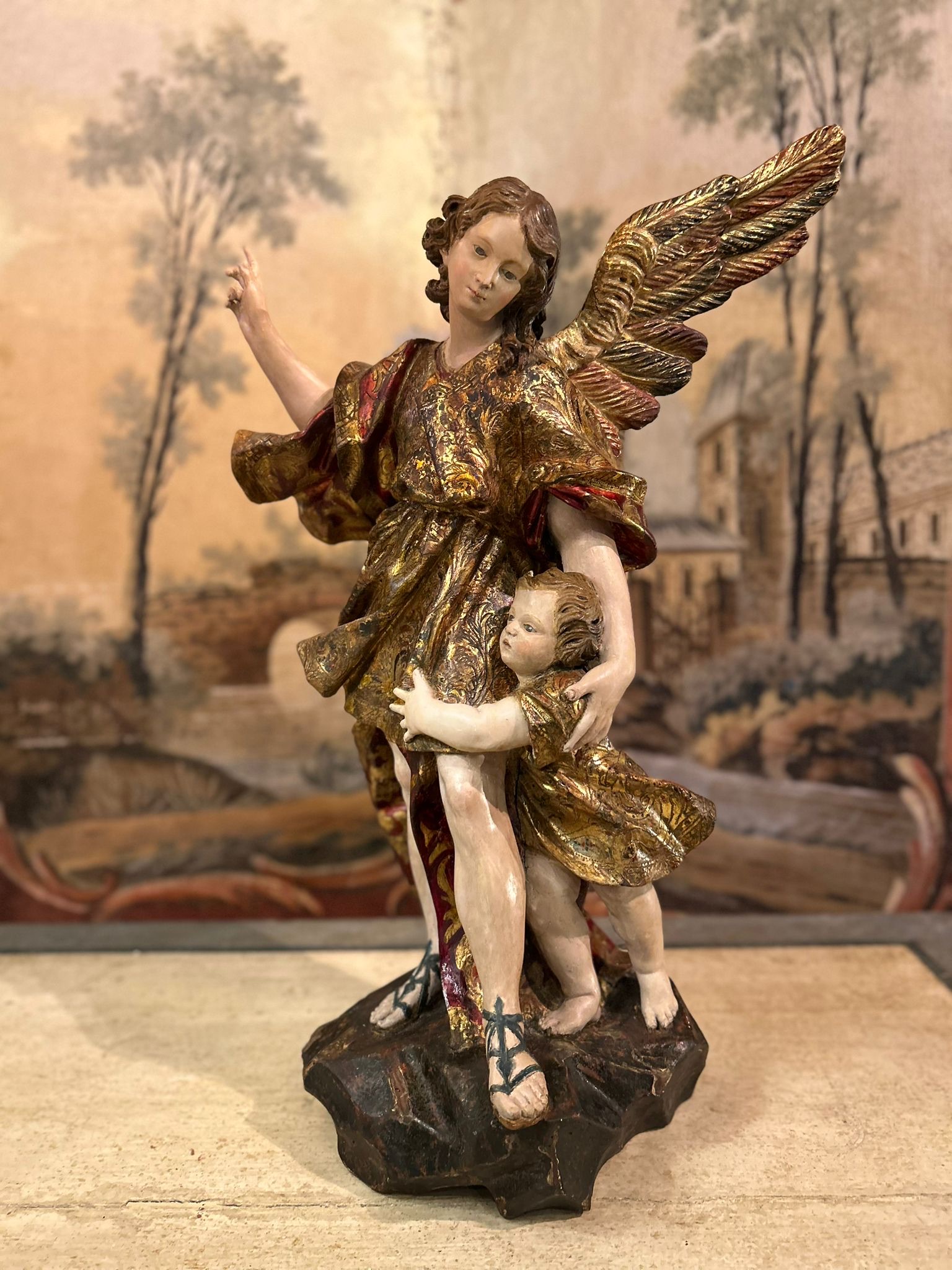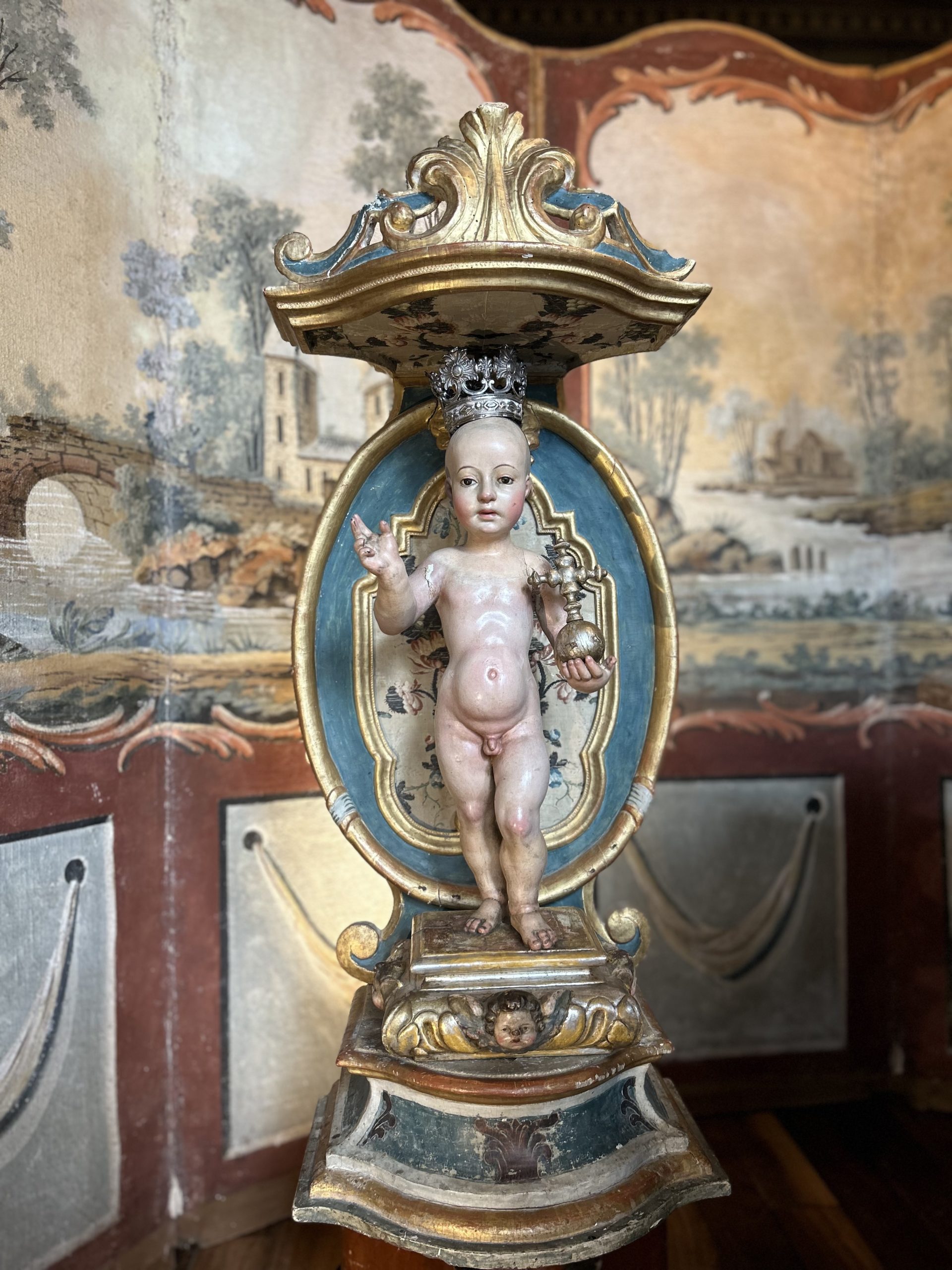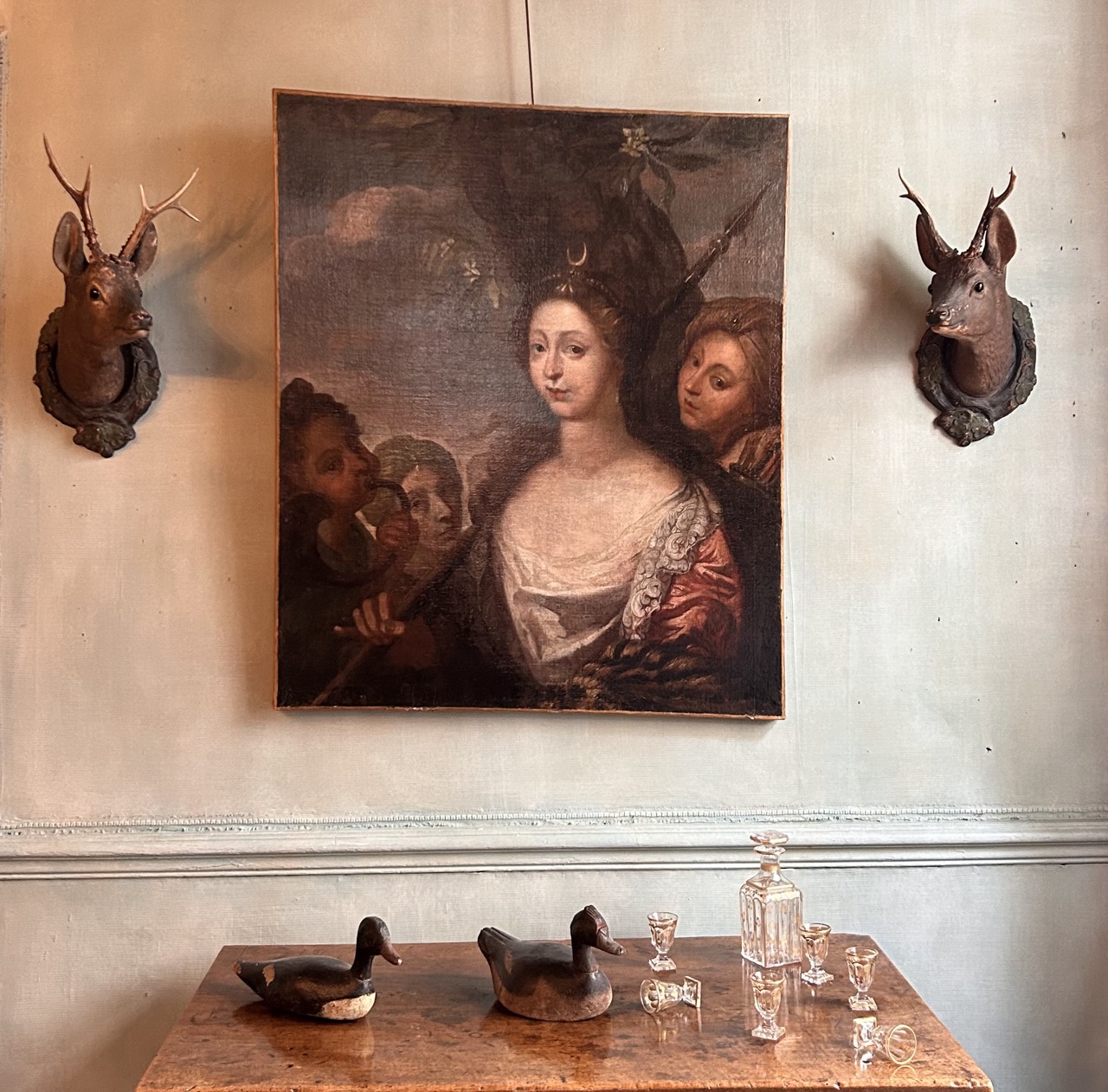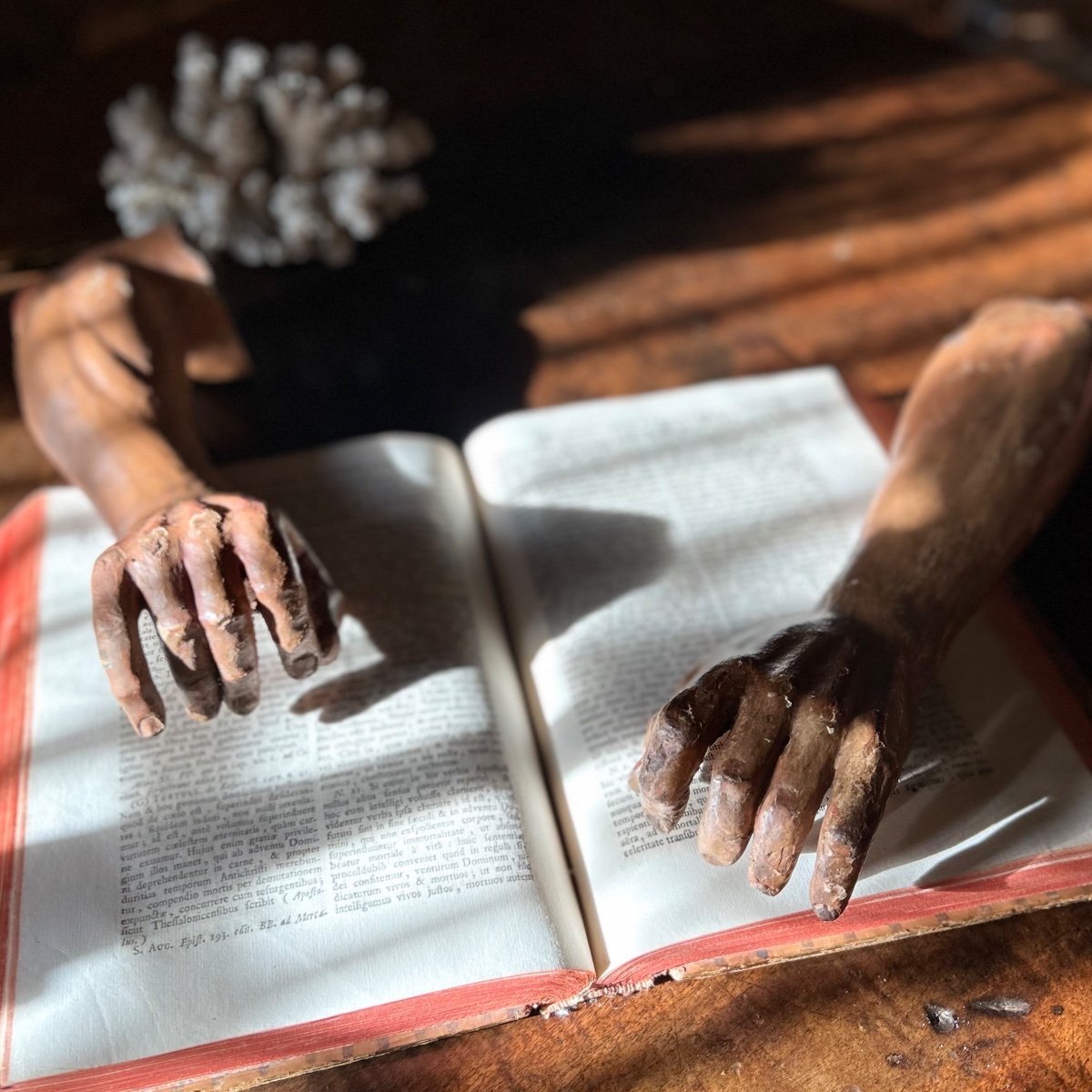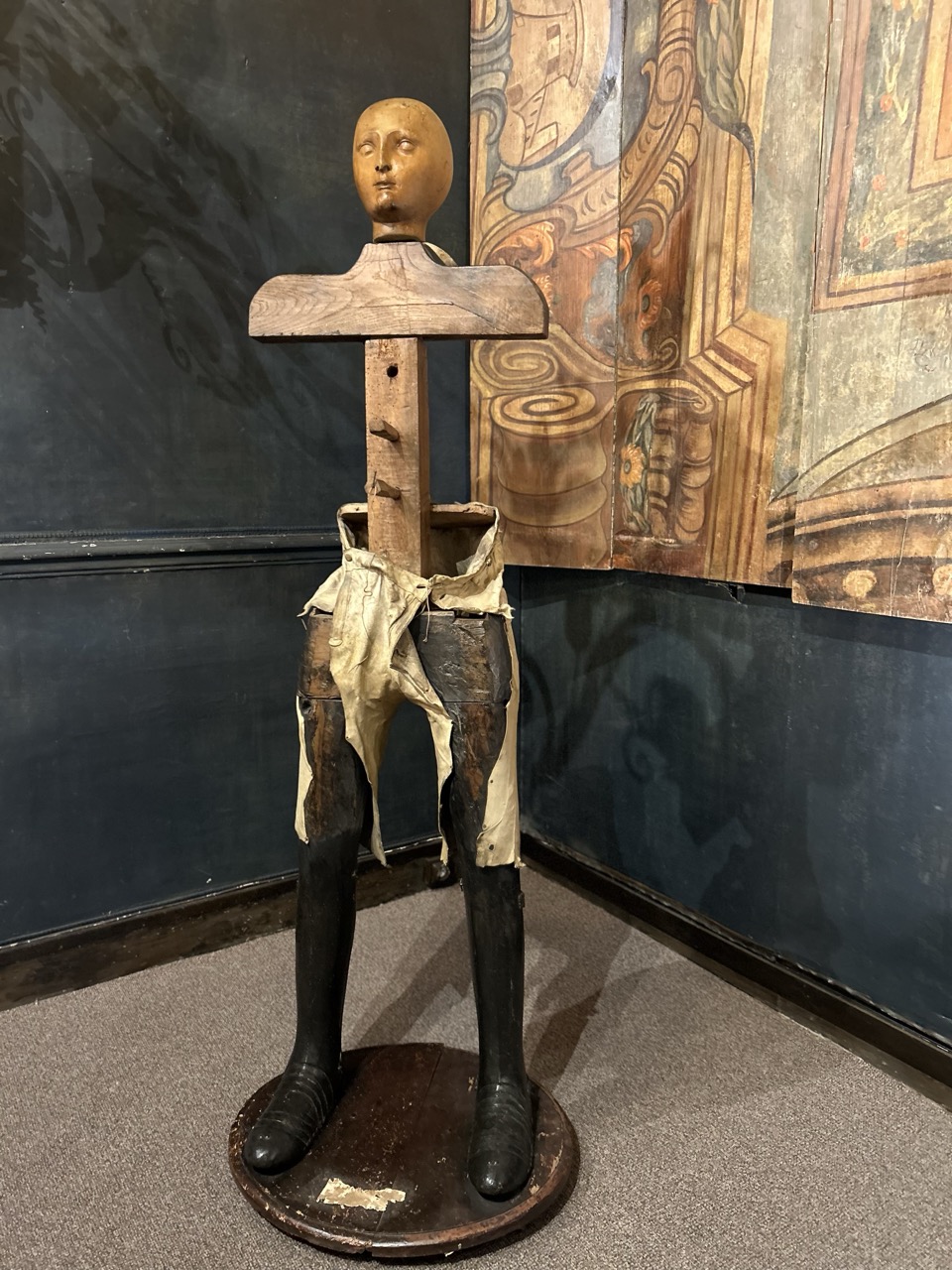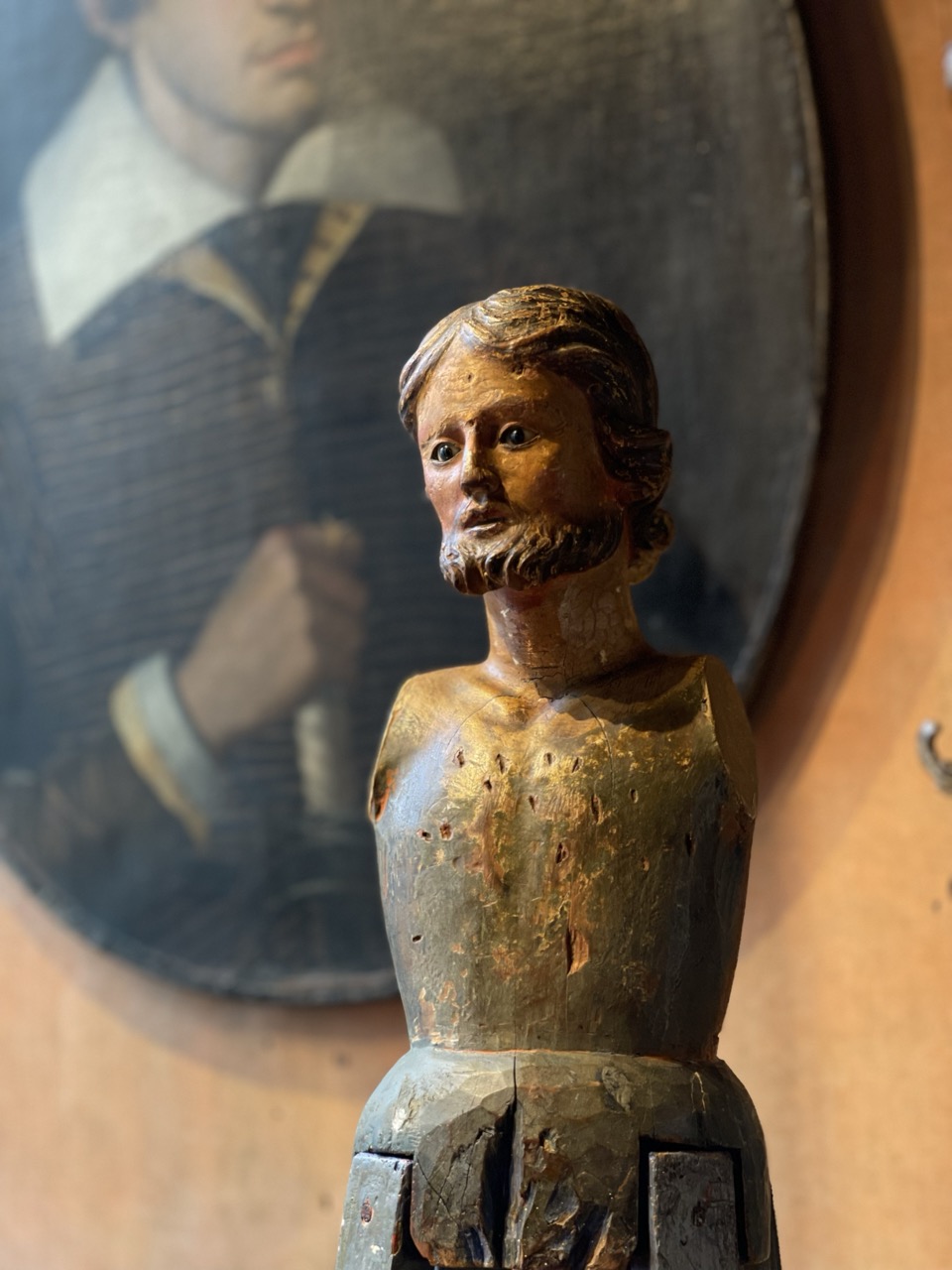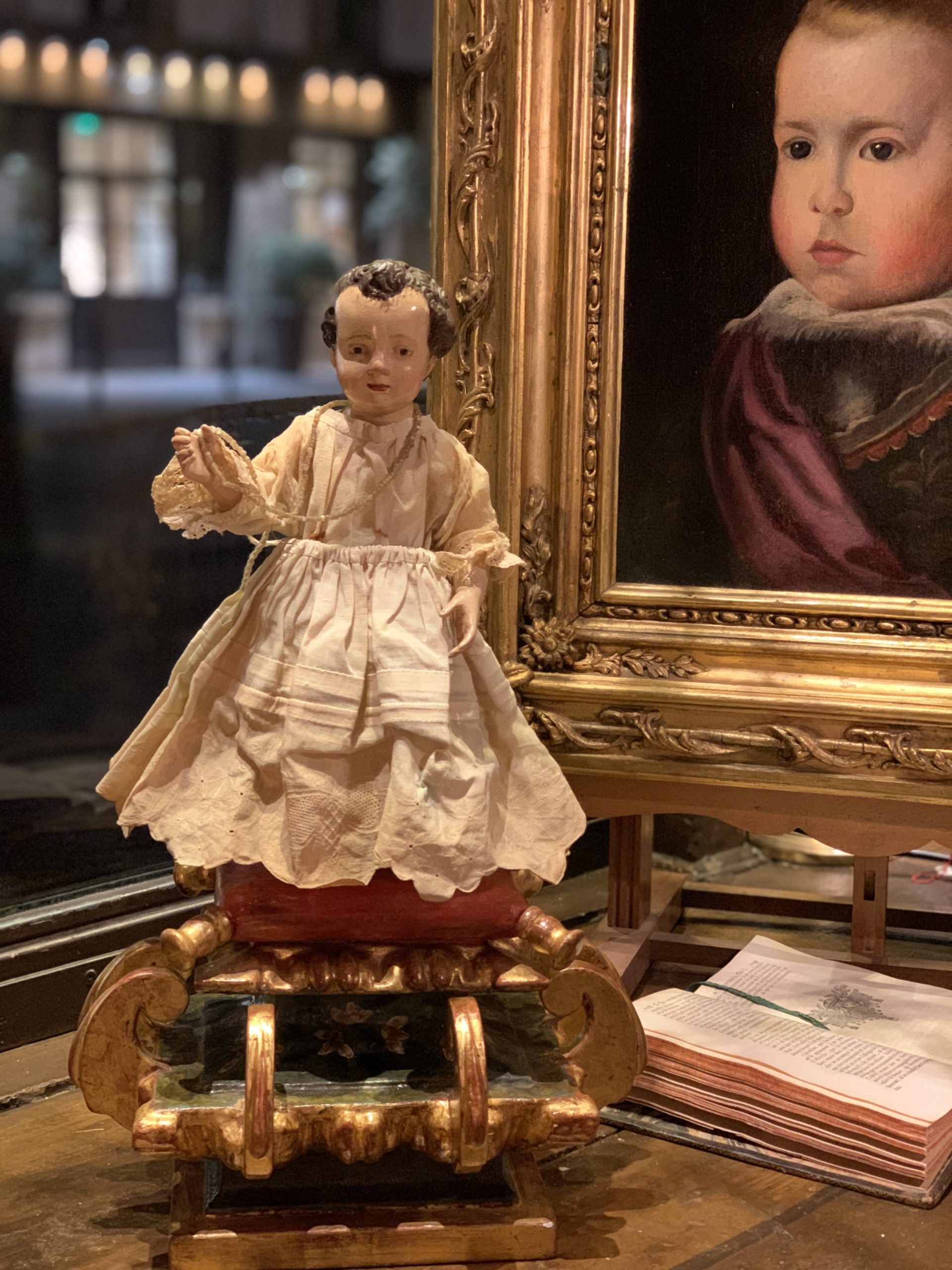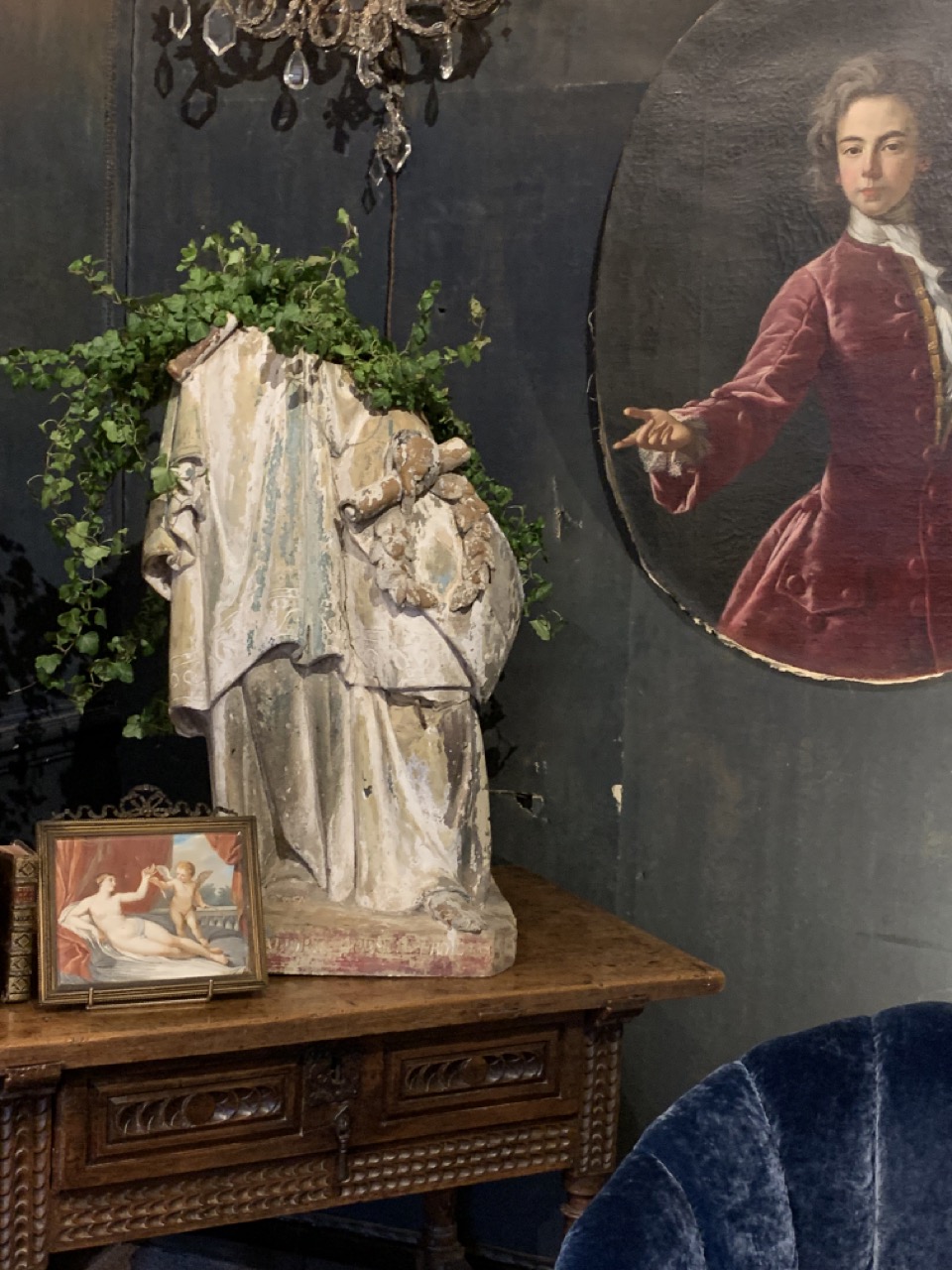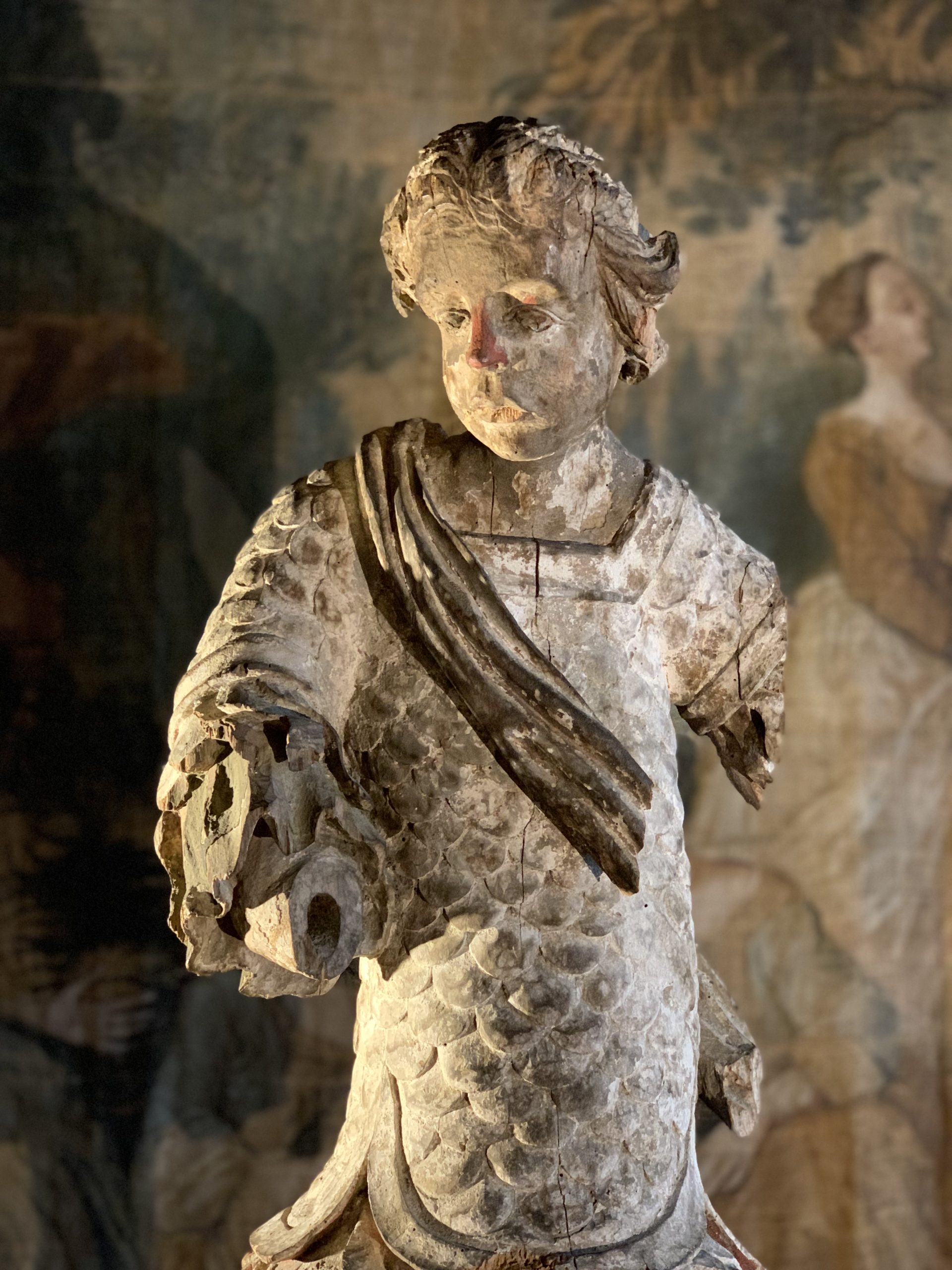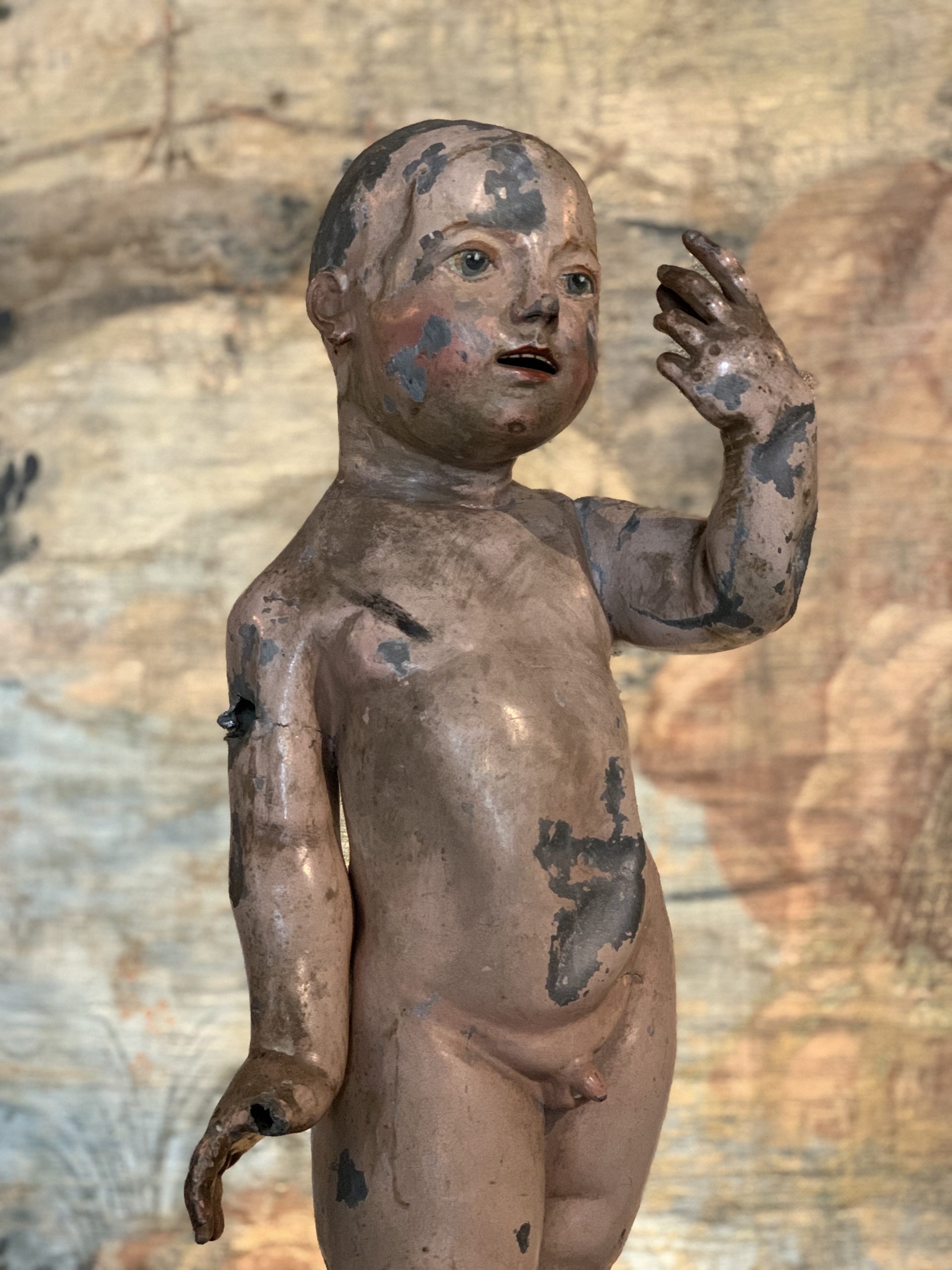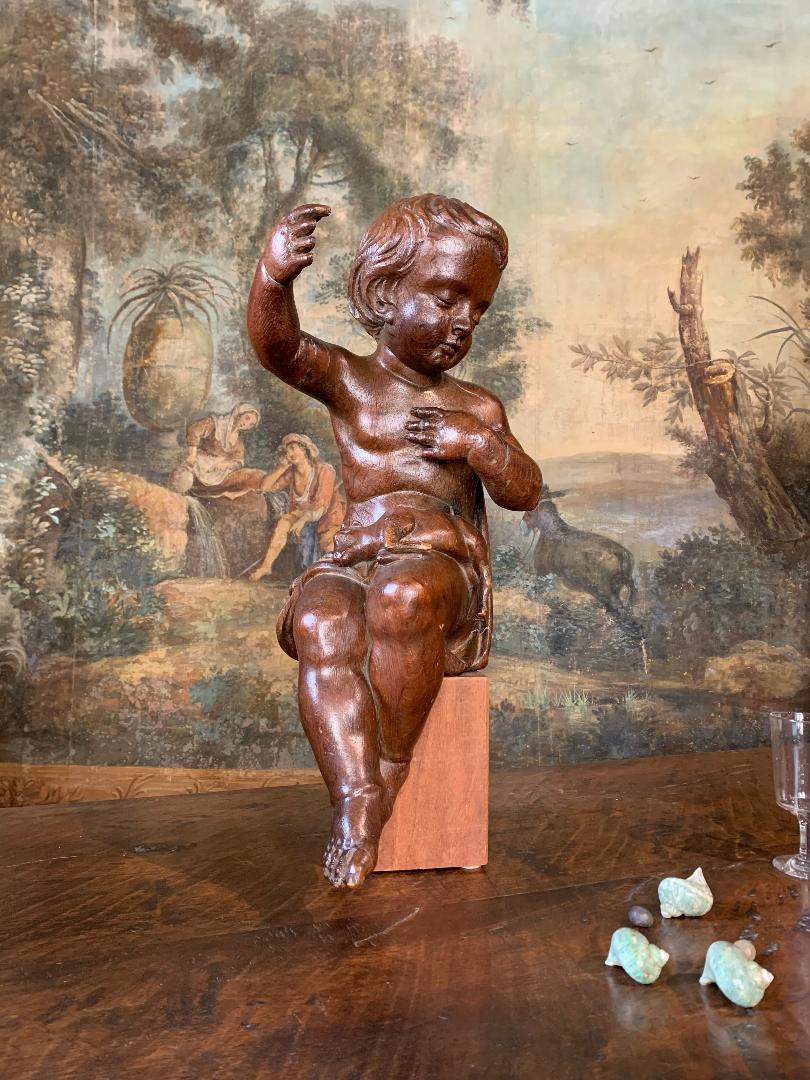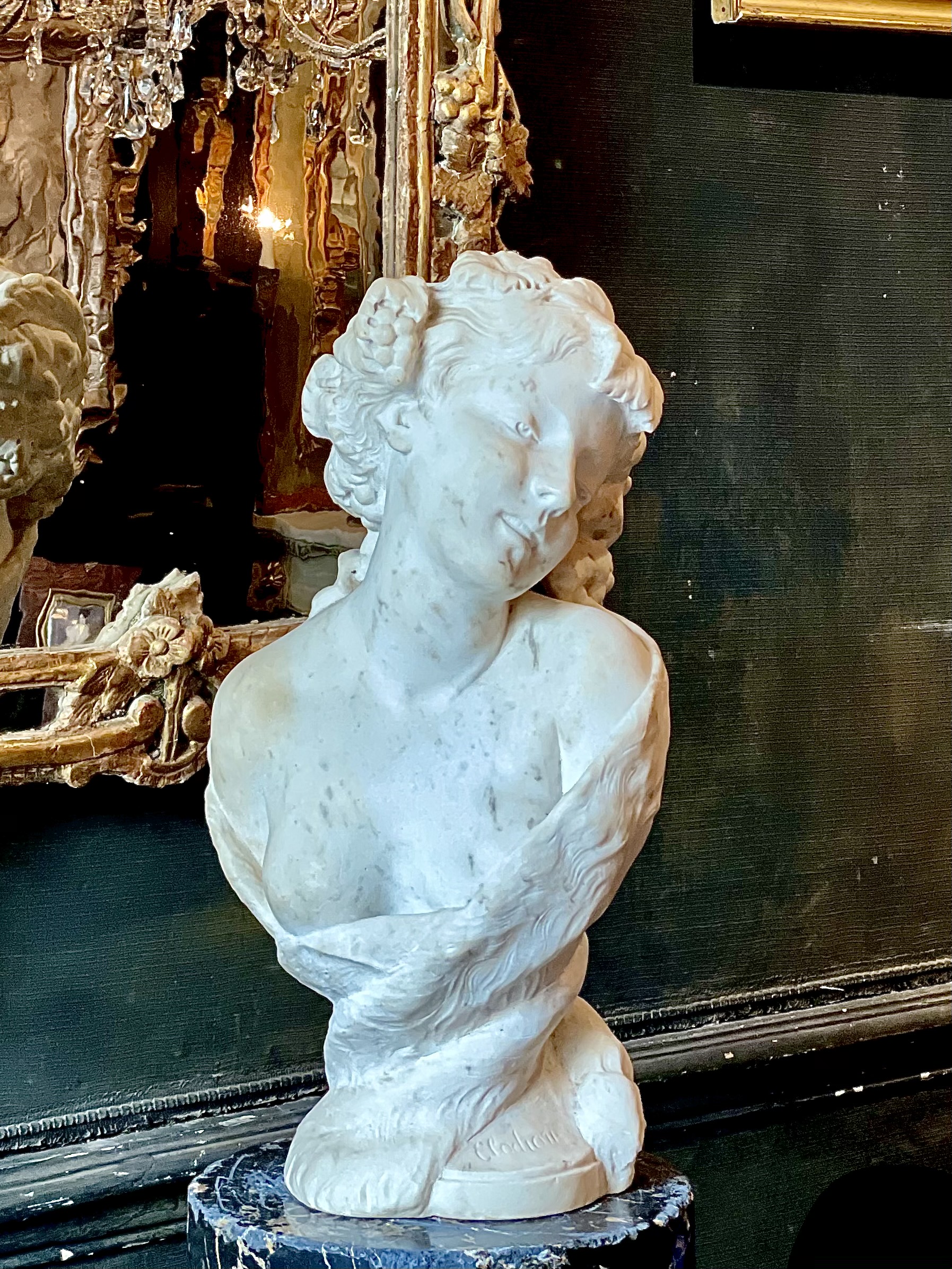“Guardian angel” in polychrome wood represented with wings accompanied by a child. The figure of the guardian angel is present in the Scriptures, the rise of its cult can be dated to the end of the Middle Ages and located in Spain. Its “promoter” is the Catalan Francesc Eiximenis (1330-1409), a figure of Franciscanism, he designed at the end of the 14th century, for the municipal authorities of Valencia, a political program which should strengthen the unity of the city at a time of factional struggles. To this end, he proposes to arouse, among the Valencians, a general devotion to the angels, in particular towards the one responsible for protecting their city against the various scourges which threaten it. The municipal authorities then established a festival in honor of the “guardian angel of Valencia”.
Placed thus at the heart of Hispanic religiosity, devotion will benefit from the codification of the supports of worship – catechism, missal, breviary – decided during the Council of Trent (1545-1563). From 1566, the Catechism of the Council dedicated a development to the subject; the reform of the liturgical books initiated by Pius V in 1568 gave King Philip II the opportunity, from 1573, to insert a mass of the guardian angel in the booklet of liturgical feasts celebrated throughout Spain, before his son Philip III facilitated its introduction into the universal liturgy by including it in the Roman breviary in 1608. From then on, devotion to the guardian angels radiated in Catholic Europe and mission lands: most catechetical works incorporate the guardian angel into their pages.
Spain
18th century
Height: 51cm
Width: 37cm
Depth: 31 cm

